 |
|
|
| (Information by Peter Kessler and Trish Wilson, with additional information from the BBC series, Mary Beard's Ultimate Rome: Empire Without Limit, presented by Mary Beard and first screened between 27 April-18 May 2016, from the Notitia Dignitatum, from Encyclopaedia of the Roman Empire, Matthew Bunson (1994), from Augustan Aristocracy, Ronald Syme (Clarendon Press, 1986), from History of Ancient Rome, Cassius Dio, from the works of 'Florus', from Annales, Tacitus, from_Life of Claudius_, Suetonius, from Life of Galba, Suetonius, from Jahres- und Provinzialfasten der senatorischen Statthalter von 69/70 bis 138/139, Werner Eck (Chiron (Journal), 12, 1982), from Curtailed Tenures of Consular Legates, Ronald Syme (Published in Zeitschrift f�r Papyrologie und Epigraphik (Journal of Papyrology and Epigraphy), 59, 1985), from Konsulat und Senatorenstand unter der Antoninen, G�za Alf�ldy (Rudolf Habelt Verlag, 1977), from Konsuln und Konsulare in der Zeit von Commodus bis Severus Alexander, Paul Leunissen (J C Gieben, 1989), and from External Links: Celtiberia.net (in Spanish), and Gran Enciclopedia Aragonesa (in Spanish), and A misty history of Roman Portugal (The Portugal News), and Euskomedia (in Spanish), and Encyclopaedia Britannica, and The Roman Military Research Society, and Rome (articles from the Encyclopaedia Britannica, 9th Edition (1875) and 10th Edition (1902)).) |
|
|
| 25 - 24 BC |
In spring 25 BC the Astures revolt. The Romans are forewarned by the Brigaentin division of Astures and are able to repel the attack. The surviving Astures forces are able to join the Cantabri in the mountains. Towards the end of the year, after much hardship and loss on both sides, Legate Antistitius finally conquers the important civitas of Aracillum, following a battle inside the associated castro. Rome considers the campaign to be over but hostilities are resumed in 24 BC. 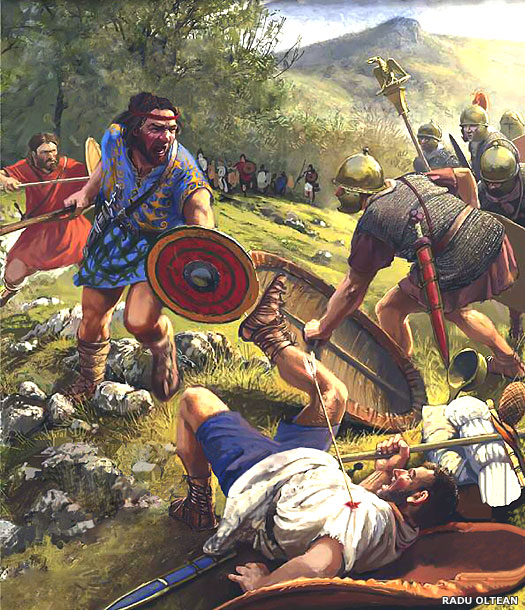 Astures warriors attack Roman troops in this modern illustration which also shows short trousers, an influence from the east, probably via Mesopotamia Astures warriors attack Roman troops in this modern illustration which also shows short trousers, an influence from the east, probably via Mesopotamia |
|
| 24 - 22 BC |
Lucius Aelius Lamia |
Rome's governor of Hispania Tarraconensis. |
| 22 - 19 BC |
Gaius Furnius |
Governor of Hispania Tarraconensis. Later senator. |
| 19 BC |
The finish to the Astures revolt is brought about when the Romans are able to launch a seaborne assault from Gaul. The tribes are treated harshly, with forced deportations, burned crops, slaughtered cattle, and slavery being Rome's preferred options. Even so, rebellions continue until 16 BC and two entire legions have to be stationed there for a further seventy years to ensure the peace. The Cilurnigos clan of the Astures later form the Ala II Asturum cavalry unit which is stationed at Chesters Roman Fort on Hadrian's Wall in Roman Britannia. The camp there is named Cilurnum after them. The Gigurri tribe provides manpower for the auxiliary cavalry unit which is labelled Ala I Gigurrorum. The Amaci tribal capital of Asturica Amak is renamed Asturica Augusta. 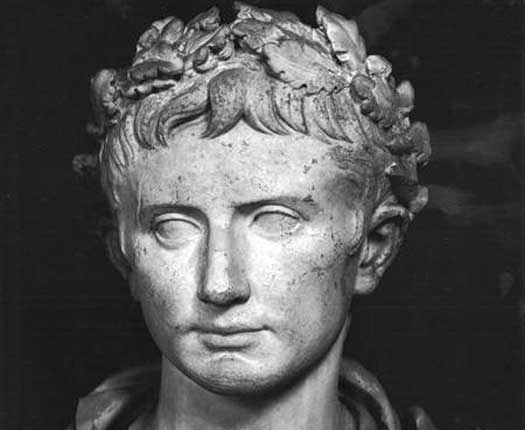 During his long 'reign' as Rome's first citizen, Augustus brought peace to the city and oversaw its transition from failing republic to vigorous and expanding empire During his long 'reign' as Rome's first citizen, Augustus brought peace to the city and oversaw its transition from failing republic to vigorous and expanding empire |
|
| 19 - 17 BC |
Publius Silius Nerva |
Governor of Hispania Tarraconensis. Former consul. |
| 13 - 9 BC |
Marcus Licinius Crassus Frugi |
Governor of Hispania Tarraconensis. Former consul. |
| c.3 BC |
Paullus Fabius Maximus |
Governor of Hispania Tarraconensis. |
| AD 9/10 |
Gnaeus Calpurnius Piso |
Former consul. Formerly in Africa. Governor. |
| 13 - 20 |
Marcus Aemilius Lepidus |
Governor of Hispania Tarraconensis. Former consul. |
| Lusitania |
Baetica |
|
| 19 - 2 BC |
Quintus Acutius Faienanus |
Governor of Lusitania. |
| 2 BC - AD 14 |
Quintus Articuleius Regulus |
Governor of Lusitania. |
| 20 - 22 |
Gaius Vibius Serenus |
Proconsul of Baetica. |
| c.25 |
Lucius Calpurnius Piso |
Governor of Hispania Tarraconensis. Later in Africa. |
| 25 - 31 |
Lucius Arruntius |
Governor of Hispania Tarraconensis. Former consul. |
| c.37 - 38 |
Gaius Caetronius Miccio |
Proconsul of Baetica. Former consul? |
| c.37 |
Gaius Ummidius Durmius Quadratus |
Governor of Lusitania. Later in Syria. |
| early 1st cent |
Lucius Caecilius Rufus |
Governor of Lusitania. Precise dates unknown. |
| c.41 |
Appius Junius Silanus |
Governor of Hispania Tarraconensis. Former consul. |
| 41 - 54 |
During the reign of Emperor Claudius, the territories of Hispania are compartmentalised into different municipalities. Both the Vascones and the Berones are included in the circumscription of Caesarea Augusta (Zaragoza). 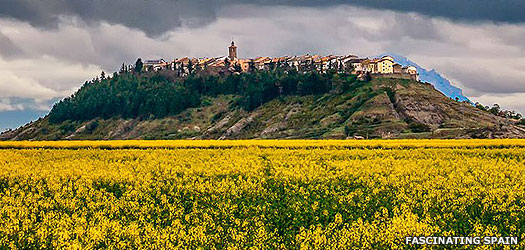 The highly-picturesque hilltop town of Berdún lies between Navarre and Aragon, once within Suessetani territory but taken by the Vascones The highly-picturesque hilltop town of Berdún lies between Navarre and Aragon, once within Suessetani territory but taken by the Vascones |
|
| 43 - 44 |
Umbonĭus Silĭo |
Proconsul of Baetica. |
| 44 - 45 |
Lucius Calventius Vetus Carminius |
Governor of Lusitania. Later in Asia. |
| c.46 |
[Marcus?] [Porcius?] Cato |
Governor of Lusitania. |
| 58? - 68? |
Marcus Salvius Otho Caesar Augustus |
Governor of Lusitania. Later [Rome](ItalyRomeEmpire.htm#Soldier Emperors)'s Emperor Otho. |
| 60 - 68 |
Servius Sulpicius Galba |
Governor. Formerly in Africa. Emperor of [ Rome](../KingListsEurope/ItalyRomeEmpire.htm#Soldier Emperors) (68-69). |
| 68 |
With Nero's Rome slipping into chaos, Caius Julius Vindex, a governor in Gaul, launches a revolt with support from Servius Sulpicius Galba. Vindex soon finds that his levies are no match for legions sent from Germania Superior (IIII Macedonica, XXI Rapax, and XXII Primigenia), under the command of Lucius Verginius Rufus, and supported by ever-reliable Gallic communities such as the Lingones. Nero loses control in Rome and commits suicide, ending the Julio-Claudian dynasty of emperors. The scene is set for the 'Year of Four Emperors'. 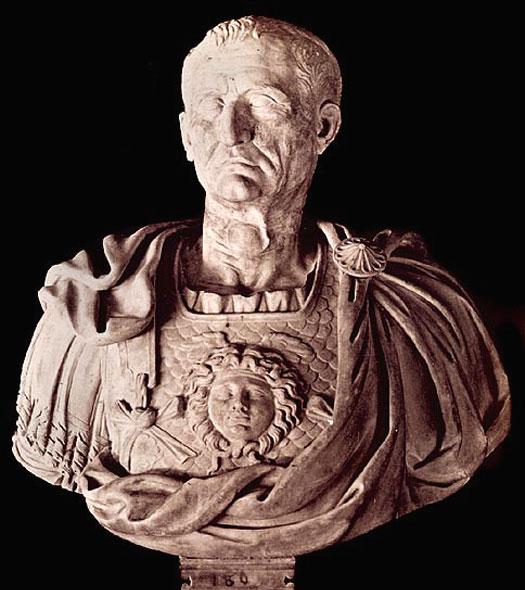 Galba seized Rome and the imperial title in AD 68, but immediately faced opposition by other generals who thought that their claim was better, sparking the 'Year of the Four Emperors' in AD 69 Galba seized Rome and the imperial title in AD 68, but immediately faced opposition by other generals who thought that their claim was better, sparking the 'Year of the Four Emperors' in AD 69 |
|
| ? - bef 67 |
Marcus Ulpius Traianus |
Proconsul of Baetica. Father of [Rome](ItalyRomeEmpire.htm#Adoptive Emperors)'s Trajan. |
| 68 - 69 |
Cluvius Rufus |
Governor of Hispania Tarraconensis. |
| 68 - 69 |
Galba, a former governor of Africa Proconsularis, begins his short reign with the execution of many allies of Nero and possible future enemies, but he swiftly demonstrates his lack of ability to wield supreme power. His replacement of key figures leads to a revolt of the legions in Gaul. They accept as their emperor Aulus Vitellius, governor of Germania Inferior. When this news reaches Rome, Galba panics and is assassinated. His initial replacement, former governor of Lusitania Marcus Salvius Otho, is quickly removed from the game. |
|
| 70 - 73 |
Titus Aurelius Fulvus |
Governor of Hispania Tarraconensis. Former consul. |
| 70 |
With the defeat of Vitellius in Rome, his former supporters join a Lingonian named Julius Sabinus in opposition. Sabinus makes a major mistake, however, when he attacks the Sequani who have remained loyal to Vespasian (Titus Flavius Vespasianus). They repulse his attack and a conference of the Gauls in the land of the Remi leads to a decision to support Rome against the Batavi. Their revolt is quickly suppressed, with some rebels being posted to Britannia (at least four units of five hundred men). 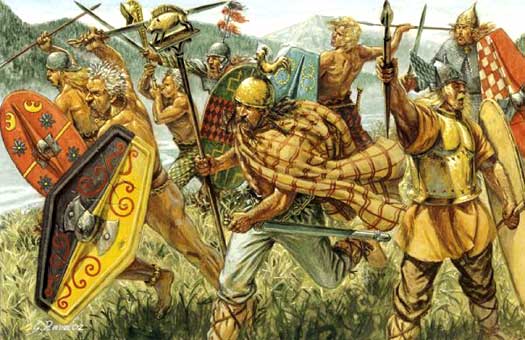 The Gaulish and Germanic Batavian revolt of AD 69-70 was a major contributor to the instability experienced in the Roman empire during the 'Year of Four Emperors' The Gaulish and Germanic Batavian revolt of AD 69-70 was a major contributor to the instability experienced in the Roman empire during the 'Year of Four Emperors' |
|
| 70s |
Lucius Lucullus |
Proconsul of Baetica. |
| 73/74 |
Lucius Junius Quintus Vibius Crispus |
Governor of Hispania Tarraconensis. Former consul. |
| 74 - 78 |
Marcus Arrecinus Clemens |
Governor of Hispania Tarraconensis. Former consul. |
| 75?- 78? |
Gaius Catellius Celer |
Governor of Lusitania. Dates uncertain. |
| 78 - 81 |
Gaius Calpetanus Rantius Q V Festus |
Governor of Hispania Tarraconensis. |
| 78 - 79 |
[Marcus?] Sempronius Fuscus |
Proconsul of Baetica. |
| 78 - 119 |
Quintus Acutius Faienanus |
Governor of Lusitania. |
| 79 - 80 |
Gaius Cornelius Gallicanus |
Proconsul of Baetica. Later in Gaul. |
| 81? - 85? |
Quintus Pomponius Rufus? |
Governor of Hispania Tarraconensis. |
| 83 - 84 |
Lucius Antistius Rusticus |
Proconsul of Baetica. |
| 85 - 90 |
Gaius Catellius Celer |
Governor of Hispania Tarraconensis. |
| 91 - 92 |
Baebius Massa |
Proconsul of Baetica. |
| 95 - 96 |
Galeo T S M E P Tiberius Caepio Hispo |
Proconsul of Baetica. |
| 96 - 97 |
? Gallus |
Proconsul of Baetica. |
| 97 - 98 |
Gaius Caecilius Classicus |
Proconsul of Baetica. |
| 98 |
Writing at this time, Tacitus not only mentions a large number of tribes in Europe, he also describes Ireland. He calls it 'a small country in comparison with Britain. He goes on to state that he has often heard his father-in-law, General Agricola, 'say that Ireland could be reduced and held by a single legion with a fair force of auxiliaries'. |
|
| 99 - 102 |
Aulus Cornelius Palma Frontonianus |
Governor of Hispania Tarraconensis. Former consul. |
| 100 - 101 |
Quintus Baebius Macer |
Proconsul of Baetica. |
| 101 - 102 |
Instanius Rufus |
Proconsul of Baetica. |
| ? - 107 |
? Lustricius Bruttianus |
Proconsul of Baetica. |
| 107 - 108 |
[Titus?] Calestrius Tiro |
Proconsul of Baetica. |
| 117 - 136 |
Emperor Hadrian spends much of his career consolidating the empire and securing its borders. This includes the building of limes, or defensive works, along the Rhine to keep out possible future Germanic incursions, although it is probably Hadrian's successor, Antoninus, who completes much of this work. 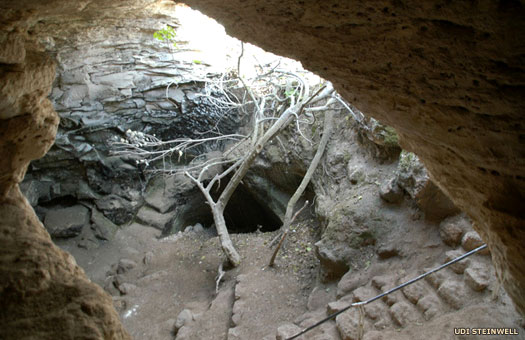 The missing half of an inscription to Hadrian was found recycled into a floor around a cistern opening, north of the Damascus gate in Jerusalem The missing half of an inscription to Hadrian was found recycled into a floor around a cistern opening, north of the Damascus gate in Jerusalem |
|
| 119? - 138? |
Marcus D Valerius Asiaticus Saturninus |
Governor of Hispania Tarraconensis. |
| 119? - 121? |
Gaius Calpurnius Flaccus? |
Governor of Lusitania. Possibly in Gallia Lugdunensis instead. |
| 122 - 123 |
Gaius Julius Proculus? |
Proconsul of Baetica. |
| 123 - 124 |
Publius Tullius Varro |
Proconsul of Baetica. |
| ? - bef 129 |
Lucius Flavius Arrianus |
Proconsul of Baetica. |
| 128 - 130 |
Gaius Oppius Sabinus Severus |
Governor of Lusitania. |
| 130? - 138? |
Junius Homullus |
Governor of Hispania Tarraconensis. |
| ? |
L Roscius Vergilius Staberianus |
Governor of Lusitania. Dates unknown, but under Hadrian. |
| 138? - 143? |
Egnatius Taurinus |
Proconsul of Baetica. Dates approximate. |
| 138? - 140? |
Gaius Javolenus Calvinus |
Governor of Lusitania. Promoted to Baetica. |
| 140? - 143? |
Gaius Javolenus Calvinus |
Proconsul of Baetica. Previously in Lusitania. |
| 138? - 161? |
Aelius Marcianus |
Proconsul of Baetica. Dates approximate. |
| bef 145 |
Cornelius Priscianus |
Governor of Hispania Tarraconensis. |
| 145? - 161? |
Lucius V A Octavius Priscus |
Governor of Hispania Tarraconensis. Former consul. |
| fl c.150s |
Publius Statius Paullus Postumus Jr |
Proconsul of Baetica. |
| c.151 - 154 |
[Aulus Avillius Urina]tius Quadratus |
Governor of Lusitania. Dates approximate. |
| c.161 - 164 |
Salvius Julianus |
Governor of Hispania Tarraconensis. Later in Africa. |
| c.164 - 167 |
Titus P P Vitrasius Pollio |
Governor of Hispania Tarraconensis. Former consul. |
| 165 - 180 |
Plague enters [ Rome](ItalyRomeEmpire.htm#Adoptive Emperors) from the east, brought back by returning legionaries. It quickly spreads throughout the empire and is generally known as the Antonine Plague, although the 'Plague of Galen', who describes its spread, is sometimes used. 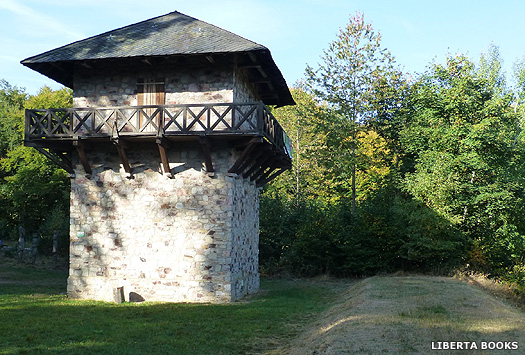 Emperors Hadrian and Antoninus Pius had concentrated on defining the Roman empire's borders, defending the territory they had. That would have included building watch towers along the limes in the Danube region which the Marcomanni managed to break through Emperors Hadrian and Antoninus Pius had concentrated on defining the Roman empire's borders, defending the territory they had. That would have included building watch towers along the limes in the Danube region which the Marcomanni managed to break through |
|
| The total death toll may reach five million, with as many as two thousand a day dying in Rome at its height. It may be the reason for the early death of Co-Emperor Lucius Verus in 169, and it drastically weakens the army. |
|
|
| 170 - 171 |
Publius Cornelius Anullinus |
Proconsul of Baetica. |
| 171 |
Gaius Aufidius Victorinus |
Proconsul of Baetica. Then Hispania Tarraconensis. |
| 171 -172 |
Gaius Aufidius Victorinus |
Formerly in Baetica. Later in Africa (173/175). |
| 183 |
Gaius Memmius Fidus Julius Albius |
Proconsul of Baetica. |
| bef 185 |
Sextus Tigidius Perennis |
Governor of Lusitania. Dates very unclear. |
| c.185 - 188 |
Cornelius Repentinus? |
Governor of Lusitania. Dates approximate. |
| 186? - 189? |
Pollienus Auspex |
Governor. Possibly later in Britannia (uncertain). |
| c.188 - 191 |
Publius Septimius Geta |
Governor of Lusitania. Brother of Rome's Septimus Severus. |
| 189 - 192 |
Quintus Hedius R Lollianus Gentianus |
Governor of Hispania Tarraconensis. |
| c.192 - 197 |
Lucius Novius Rufus |
Governor of Hispania Tarraconensis. Revolted. |
| 193 |
Severus marches on Rome and the praetorians declare for him. Emperor Didianus Julianus is dispatched only six months after the death of Emperor Commodus. Severus, now fully in command, offers a far more serious rival - Clodius Albinus - the junior title of Caesar which he accepts. 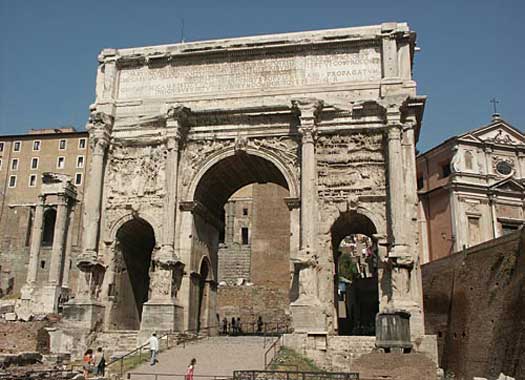 The Machiavellian Septimus Severus continued to increase the glory of Rome (this surviving arch is named after him) but he continued the imperial practice of Christian persecution The Machiavellian Septimus Severus continued to increase the glory of Rome (this surviving arch is named after him) but he continued the imperial practice of Christian persecution |
|
| The governor of Hispania Tarraconensis, Lucius Novius Rufus, revolts during this period as a supporter of Clodius Albinus. He is defeated by Gaius Caesonius Macer Rufinianus who seemingly gains the governorship of Lusitania as a reward. |
|
|
| 193? - 197 |
Gaius Caesonius Macer Rufinianus |
Governor of Lusitania. First date approximate. Later in Africa. |
| 197 - 198 |
Tiberius Claudius Candidus |
Governor of Hispania Tarraconensis. |
| c.197 - 200 |
Gaius Junius Faustinus P- Postumianus |
Governor of Lusitania. Dates approximate. |
| 198? - 209? |
Marcus Maecius Probus |
Governor of Hispania Tarraconensis. |
| 198? - 209? |
Titus Flavius Titianus |
Governor of Hispania Tarraconensis. Executed c.216. |
| 198? - 217? |
Junius Faustinus Postumianus |
Governor. Later in Britannia Inferior (c.222). |
| c.201 - 209 |
Decimus Iun[ius? ...] Coelianus |
Governor of Lusitania. Dates approximate. |
| 209? - 212? |
Marcus Nummius Umbius Primus Senecio |
Governor of Hispania Tarraconensis. |
| c.211 |
Sextus Furnius Julianus |
Governor of Lusitania. Dates approximate. |
| c.214 - 217 |
Gaius Julius Cerealis |
Governor of Hispania Tarraconensis. |
| 215 |
Caecilius Aemilianus |
Proconsul of Baetica. |
| 217 |
By 11 April 217, following the curious death of Emperor Antoninus (Caracalla), Macrinus has proclaimed himself emperor of [ Rome](ItalyRomeEmpire.htm#Unassociated Emperors Secundas). He is the first man to become so without membership in the senatorial class and is the first emperor of Moorish descent. 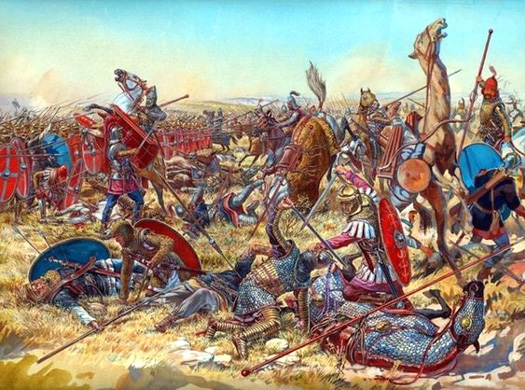 The Battle of Nisibis was the final throw of the dice in the intermittent Roman-Parthian wars, and victory most likely went to the Parthians although they themselves were to fall just seven years later The Battle of Nisibis was the final throw of the dice in the intermittent Roman-Parthian wars, and victory most likely went to the Parthians although they themselves were to fall just seven years later |
|
| 222? - 235? |
Quintus Atrius Clonius |
Governor of Hispania Tarraconensis. |
| c.225 - 227 |
Rutilius Pudens Crispinus |
Governor of Lusitania. Dates approximate. |
| bef 235? |
Lucius Domitius Gallicanus Papinianus |
Governor. Formerly in Dalmatia. Later in Germania Inferior. |
| 260 - 274 |
Crisis strikes the weakened [ Roman](../KingListsEurope/ItalyRomeEmpire.htm#Soldier Emperors Secundas) empire, with two major splinter states (both backed here in lilac) forming in the same year. The Rhine frontier collapses completely at around the same time to the Alemanni. |
|
The first is created by Postumus, lieutenant on the Rhine to Emperor Gallienus. He murders the praetorian prefect, Silvanus, and Gallienus' own son Saloninus at Colonia Claudia Ara Agrippinensium (modern Cologne) and declares himself emperor. The Roman provinces in Germany, Gaul, Iberia, and Britain and their armies support him. For the next thirteen years the whole of the north-western part of the empire is run as an independent but fully Roman state with its own series of emperors, and is called the ' Empire of the Gallic Provinces' (Imperium Galliarum, or the 'Gallic Empire', surviving during 260-274). Postumus establishes a capital at Cologne, the headquarters of Germania Inferior and chief town of the Ubii. 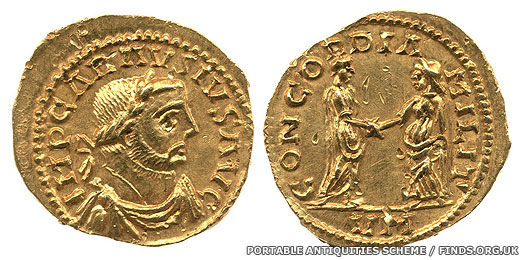 Shown here are two sides of a coin which was issued during the reign as emperor of Britannia of Carausius, forced to rebel in the face of charges of colluding with pirates Shown here are two sides of a coin which was issued during the reign as emperor of Britannia of Carausius, forced to rebel in the face of charges of colluding with pirates |
|
|
| The second splinter state is the Palmyrene empire (260-272), which encompasses the Roman provinces of Syria, Palestine, Egypt and large parts of Asia Minor. It is ruled as little more than an expanded kingdom by Queen Zenobia for her infant son Vaballanthus with a capital at Palmyra. |
|
|
| late 200s |
Aemilius Aemilianus |
Governor of Lusitania. Dates highly uncertain. |
| 286 - 293 |
Datianus |
Governor of Lusitania. |
| 293 |
The crises of the late third century AD prompt Emperor Diocletian to introduce the 'Tetrarchy', along with various administrative reforms. The Iberian province of Hispania Tarraconensis is now divided into three smaller provinces to make it less likely that a repeat will occur of a breakaway part of the empire. |
|
These new divisions are Carthaginensis (covering central and south-east Iberia), Gallaecia (in the north-west, domain of the Gallaeci tribes), and Tarraconensis (the north-east corner). Roman records from this period are highly fragmented as decay sets in, followed by gradual retreat.  Despite having been raised to office by Diocletian in AD 285, Maximianus seemingly couldn't avoid plotting and planning, even when having been forgiven and readmitted to high office Despite having been raised to office by Diocletian in AD 285, Maximianus seemingly couldn't avoid plotting and planning, even when having been forgiven and readmitted to high office |
|
|
| Carthaginensis |
Gallaecia |
|
| 290s - 300? |
Dacian |
Roman governor of Carthaginensis. Formerly Gaul. Dates vague. |
| early 300s |
Aulus Caecina Tacitus |
Roman proconsul of Baetica. |
| early 300s |
L Sempronius O Celsus -lius Fabianus |
Roman proconsul of Baetica. |
| early 300s |
Quintus Pomponius Muna- Clodianus |
Roman proconsul of Baetica. |
| c.337 - 340 |
Iulius Saturninus |
Governor of Lusitania. Dates approximate. |
| bef 338 |
Fabius Aconius Catullinus Philomatius |
[Roman](ItalyRomeEmpire.htm#Flavians Secundas) governor of Gallaecia before 338. Later in Africa. |
| 337 |
 Constantine II emerges from the unsettled period following his father's death as the senior Augustus (see feature link), controlling Britain, Gaul, and Iberia - the Gallic Provinces. Constans controls Africa, Italy, and the Illyrian provinces, while Constantius II holds Constantinople and most of the east, including Palestine. Constantine II emerges from the unsettled period following his father's death as the senior Augustus (see feature link), controlling Britain, Gaul, and Iberia - the Gallic Provinces. Constans controls Africa, Italy, and the Illyrian provinces, while Constantius II holds Constantinople and most of the east, including Palestine. 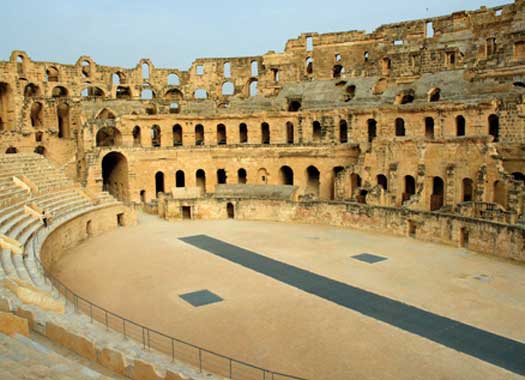 Roman Carthage, when it was finally constructed over the ashes of the original city, was of course bigger and better and even more grand than the original city had been Roman Carthage, when it was finally constructed over the ashes of the original city, was of course bigger and better and even more grand than the original city had been |
|
| c.350 - 383 |
 Later to be General Magnus Clemens Maximus, this important [Roman](ItalyRomeEmpire.htm#Flavians Secundas) figure is born on the Iberian peninsula in the mid-fourth century. His family run a household with some standing, although the details of his origins are a little confused (see feature link). In AD 383 he takes advantage of the growing contempt for the failing Emperor Gratian by revolting in Britannia. After reorganising the island's defences he invades Gaul with a large army, and is even attributed with setting up a British kingdom in Armorica. Later to be General Magnus Clemens Maximus, this important [Roman](ItalyRomeEmpire.htm#Flavians Secundas) figure is born on the Iberian peninsula in the mid-fourth century. His family run a household with some standing, although the details of his origins are a little confused (see feature link). In AD 383 he takes advantage of the growing contempt for the failing Emperor Gratian by revolting in Britannia. After reorganising the island's defences he invades Gaul with a large army, and is even attributed with setting up a British kingdom in Armorica. 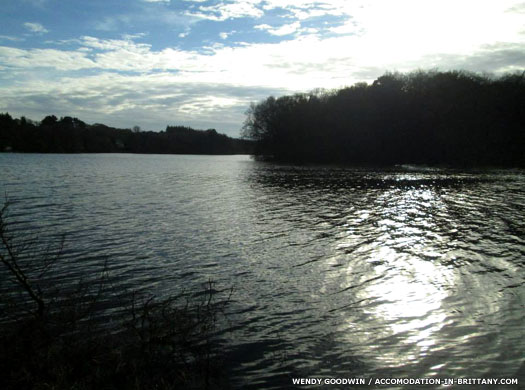 The landscape of Armorica - extremely hilly inland with a wonderful, long coastline - would have seemed very familiar to the Britons who began to settle here from the late fourth century onwards (Glomel in the modern Côtes-d'Armor département is shown here) The landscape of Armorica - extremely hilly inland with a wonderful, long coastline - would have seemed very familiar to the Britons who began to settle here from the late fourth century onwards (Glomel in the modern Côtes-d'Armor département is shown here) |
|
| 361 - 362 |
Vettius Agorius Praetextatus |
Governor of Lusitania. Died 384. |
| 406 - 409 |
By now the [Franks](FranceFranks.htm#Tribal Leaders) are settled on the west bank of the Rhine in minor 'kingdoms' which cover areas of north-eastern Gaul, along with some groups of Suevi. Now, in 406, the bulk of the Suevi peoples cross the Rhine at Moguntiacum (Mainz) in association with the Vandali and Alani. After spending two years ravaging Gaul and migrating southwards into Aquitania, all three tribes are pushed out by the Visigoths and cross the Pyrenees to settle in Roman Iberia by 409, quickly making it a 'Post-Roman Iberia'. |
|
 |
|
|

 Astures warriors attack Roman troops in this modern illustration which also shows short trousers, an influence from the east, probably via Mesopotamia
Astures warriors attack Roman troops in this modern illustration which also shows short trousers, an influence from the east, probably via Mesopotamia During his long 'reign' as Rome's first citizen, Augustus brought peace to the city and oversaw its transition from failing republic to vigorous and expanding empire
During his long 'reign' as Rome's first citizen, Augustus brought peace to the city and oversaw its transition from failing republic to vigorous and expanding empire The highly-picturesque hilltop town of Berdún lies between Navarre and Aragon, once within Suessetani territory but taken by the Vascones
The highly-picturesque hilltop town of Berdún lies between Navarre and Aragon, once within Suessetani territory but taken by the Vascones Galba seized Rome and the imperial title in AD 68, but immediately faced opposition by other generals who thought that their claim was better, sparking the 'Year of the Four Emperors' in AD 69
Galba seized Rome and the imperial title in AD 68, but immediately faced opposition by other generals who thought that their claim was better, sparking the 'Year of the Four Emperors' in AD 69 The Gaulish and Germanic Batavian revolt of AD 69-70 was a major contributor to the instability experienced in the Roman empire during the 'Year of Four Emperors'
The Gaulish and Germanic Batavian revolt of AD 69-70 was a major contributor to the instability experienced in the Roman empire during the 'Year of Four Emperors' The missing half of an inscription to Hadrian was found recycled into a floor around a cistern opening, north of the Damascus gate in Jerusalem
The missing half of an inscription to Hadrian was found recycled into a floor around a cistern opening, north of the Damascus gate in Jerusalem Emperors Hadrian and Antoninus Pius had concentrated on defining the Roman empire's borders, defending the territory they had. That would have included building watch towers along the limes in the Danube region which the Marcomanni managed to break through
Emperors Hadrian and Antoninus Pius had concentrated on defining the Roman empire's borders, defending the territory they had. That would have included building watch towers along the limes in the Danube region which the Marcomanni managed to break through The Machiavellian Septimus Severus continued to increase the glory of Rome (this surviving arch is named after him) but he continued the imperial practice of Christian persecution
The Machiavellian Septimus Severus continued to increase the glory of Rome (this surviving arch is named after him) but he continued the imperial practice of Christian persecution The Battle of Nisibis was the final throw of the dice in the intermittent Roman-Parthian wars, and victory most likely went to the Parthians although they themselves were to fall just seven years later
The Battle of Nisibis was the final throw of the dice in the intermittent Roman-Parthian wars, and victory most likely went to the Parthians although they themselves were to fall just seven years later Shown here are two sides of a coin which was issued during the reign as emperor of Britannia of Carausius, forced to rebel in the face of charges of colluding with pirates
Shown here are two sides of a coin which was issued during the reign as emperor of Britannia of Carausius, forced to rebel in the face of charges of colluding with pirates Despite having been raised to office by Diocletian in AD 285, Maximianus seemingly couldn't avoid plotting and planning, even when having been forgiven and readmitted to high office
Despite having been raised to office by Diocletian in AD 285, Maximianus seemingly couldn't avoid plotting and planning, even when having been forgiven and readmitted to high office Constantine II emerges from the unsettled period following his father's death as the senior Augustus (see feature link), controlling Britain, Gaul, and Iberia - the Gallic Provinces. Constans controls Africa, Italy, and the Illyrian provinces, while Constantius II holds Constantinople and most of the east, including Palestine.
Constantine II emerges from the unsettled period following his father's death as the senior Augustus (see feature link), controlling Britain, Gaul, and Iberia - the Gallic Provinces. Constans controls Africa, Italy, and the Illyrian provinces, while Constantius II holds Constantinople and most of the east, including Palestine.  Roman Carthage, when it was finally constructed over the ashes of the original city, was of course bigger and better and even more grand than the original city had been
Roman Carthage, when it was finally constructed over the ashes of the original city, was of course bigger and better and even more grand than the original city had been Later to be General Magnus Clemens Maximus, this important [Roman](ItalyRomeEmpire.htm#Flavians Secundas) figure is born on the Iberian peninsula in the mid-fourth century. His family run a household with some standing, although the details of his origins are a little confused (see feature link). In AD 383 he takes advantage of the growing contempt for the failing Emperor Gratian by revolting in Britannia. After reorganising the island's defences he invades Gaul with a large army, and is even attributed with setting up a British kingdom in Armorica.
Later to be General Magnus Clemens Maximus, this important [Roman](ItalyRomeEmpire.htm#Flavians Secundas) figure is born on the Iberian peninsula in the mid-fourth century. His family run a household with some standing, although the details of his origins are a little confused (see feature link). In AD 383 he takes advantage of the growing contempt for the failing Emperor Gratian by revolting in Britannia. After reorganising the island's defences he invades Gaul with a large army, and is even attributed with setting up a British kingdom in Armorica.  The landscape of Armorica - extremely hilly inland with a wonderful, long coastline - would have seemed very familiar to the Britons who began to settle here from the late fourth century onwards (Glomel in the modern Côtes-d'Armor département is shown here)
The landscape of Armorica - extremely hilly inland with a wonderful, long coastline - would have seemed very familiar to the Britons who began to settle here from the late fourth century onwards (Glomel in the modern Côtes-d'Armor département is shown here)